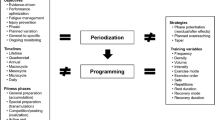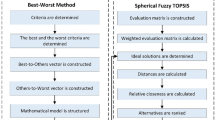Abstract
Acute mountain sickness (AMS) develops when rapidly ascending to high altitudes. However, some mountaineers will suffer from AMS even at 2,000 m and others not until 5,000 m. The awareness of the individual susceptibility for AMS would be helpful for preventive strategies. Thus, the main purpose of this paper is the comparison of existing studies dealing with the prediction of AMS susceptibility and to draw conclusions on presently most valuable tests. Data source: A PubMed search has been performed, and preliminary observations from our laboratory have been included. The cautious conclusion derived from the reviewed 16 studies is that values of arterial oxygen saturation (SaO2), determined 20–30 min after exposure to simulated hypoxia equivalent to 2,300–4,200 m, seem to be the most useful predictors of AMS susceptibility (>80% correct prediction). Because the sympathetic activation during acute exposure to hypoxia may well contribute to the AMS development, parameters like heart rate variability or blood lactate could even enhance this predictability. The ventilatory response to hypoxia is easily trainable by pre-exposures to hypoxia but considers only part of the complex acclimatization process.

Similar content being viewed by others
References
Honigman B, Theiss MK, Koziol-McLain J, Roach R, Yip R, Houston C, Moore LG (1993) Acute mountain sickness in a general tourist population at moderate altitudes. Ann Intern Med 118:587–592
Maggorini M, Bühler B, Walter M, Oelz O (1990) Prevalence of acute mountain sickness in the Swiss Alps. BMJ 301:853–855
Schneider M, Bernasch D, Weymann J, Holle R, Bärtsch P (2002) Acute mountain sickness: influence of susceptibility, pre-exposure and ascent rate. Med Sci Sports Exerc 34:1886–1891
Bärtsch P, Swenson E, Paul A, Jülg B, Hohenhaus E (2002) Hypoxic ventilatory response, ventilation, gas exchange, and fluid balance in acute mountain sickness. High Alt Med Biol 3:361–376
Burtscher M, Flatz M, Faulhaber M (2004) Prediction of susceptibility to acute mountain sickness by SaO2 values during short-term exposure to hypoxia. High Alt Med Biol 5:335–340
Milledge JS, Beeley JM, Broome J, Luff N, Pelling M, Smith D (1991) Acute mountain sickness susceptibility, fitness and hypoxic ventilatory response. Eur Respir J 4:1000–1003
Moore LG, Harrison GL, McCullough RG, Micco AJ, Tucker A, Weil JV, Reeves JT (1986) Low acute hypoxic ventilatory response and hypoxic depression in acute altitude sickness. J Appl Physiol 60:1407–1412
Rathat C, Richalet JP, Herry JP, Larmignat P (1992) Detection of high risk subjects for high altitude disease. Int J Sports Med 13:76–79
Richalet J, Keromas A, Dersch B, Corizzi F, Mehdioui H, Pophillat B, Chardonnet H, Tassery F, Herry JP, Rathat C, Chaduteau C, Darnaud B (1988) Charatéristiques physiologiques des alpinistes de haute altitude. Sci Sports 3:89–108
Milledge JS, Thomas PS, Beeley JM, English JS (1988) Hypoxic ventilatory response and acute mountain sickness. Eur Respir J 1:938–951
Hohenhaus E, Paul A, McCullough RE, Kücherer H, Bärtsch P (1995) Ventilatory and pulmonary vascular response to hypoxia and susceptibility to high altitude pulmonary oedema. Eur Respir J 8:1825–1833
Savourey G, Moirant C, Eterradossi J, Bittel J (1995) Acute mountain sickness relates to sea-level partial pressure of oxygen. Eur J Appl Physiol 70:469–476
Selland MA, Stelzner TJ, Stevens T, Mazzeo RS, McCullough RE, Reeves JT (1993) Pulmonary function and hypoxic ventilatory response in subjects susceptible to high-altitude pulmonary edema. Chest 103:111–116
Roach RC, Greene ER, Schoene RB, Hackett PH (1998) Arterial oxygen saturation for prediction of acute mountain sickness. Aviat Space Environ Med 69:1182–1185
Muza SR, Pock PB, Zupan MF, Miller JC, Thomas WR, Cymerman A (2004) Residence at moderate altitude improves ventilatory response to high altitude. Aviat Space Environ Med 75:1042–1048
Hayat A, Hussain MM, Aziz S, Siddiqui AH, Hussain T (2006) Hyperventilatory capacity—a predictor of altitude sickness. J Ayub Med Coll Abbottabad 18:17–20
Austin D, Sleigh J (1995) Prediction of acute mountain sickness. BMJ 311:989–990
Grant S, MacLeod N, Kay JW, Matt M, Patel S, Paterson A, Peacock A (2002) Sea level and acute responses to hypoxia: do they predict physiological responses and acute mountain sickness at altitude. Br J Sports Med 36:141–146
Savourey G, Launay JC, Besnard Y, Guinet-Lebreton A, Alonso A, Sauvet F, Bourrilhon C (2007) Normo or hypobaric tests: propositions for the determination of the individual susceptibility to altitude illnesses. Eur J Appl Physiol 100:193–205
Roach RC, Bärtsch P, Hackett PH, Oelz O (1993) The Lake Louise acute mountain sickness scoring system. In: Sutton JR, Houston CS, Coates G (eds) Hypoxia and molecular medicine. Queen City Printers, Burlington, pp 272–27
Schoene B, Lahiri S, Hackett PH, Peters RM, Milledge JS, Pizzo CJ, Sarnquist FH, Boyer SJ, Graber DJ, Maret H et al (1984) Relationship of hypoxic ventilatory response to exercise performance on Mount Everest. J Appl Physiol 56:1478–1483
Reeves JT, McCullough RE, Moore LG, Cymerman A, Weil JV (1993) Sea-level PCO2 relates to ventilatory acclimatization at 4300 m. J Appl Physiol 75:1117–1122
Ursino M, Magosso E, Avanzolini G (2001) An integrated model of the human ventilatory control system the response to hypoxia. Clin Physiol 21:465–477
Liang PJ, Bascom DA, Robbins PA (1997) Extended models of the ventilatory response to sustained isocapnic hypoxia in humans. J Appl Physiol 82:667–677
Bailey DM, Davies B, Castell LM, Collier DJ, Milledge JS, Hullin DA, Seddon PS, Young IS (2003) Symptoms of infection and acute mountain sickness; associated metabolic sequelae and problems in differential diagnosis. High Alt Med Biol 4:319–331
Author information
Authors and Affiliations
Corresponding author
Rights and permissions
About this article
Cite this article
Burtscher, M., Szubski, C. & Faulhaber, M. Prediction of the susceptibility to AMS in simulated altitude. Sleep Breath 12, 103–108 (2008). https://doi.org/10.1007/s11325-007-0131-0
Published:
Issue Date:
DOI: https://doi.org/10.1007/s11325-007-0131-0




